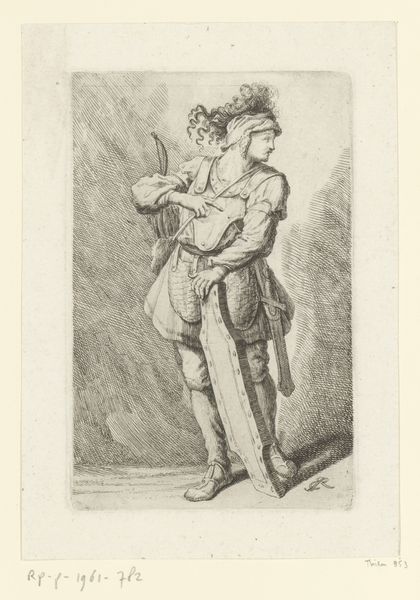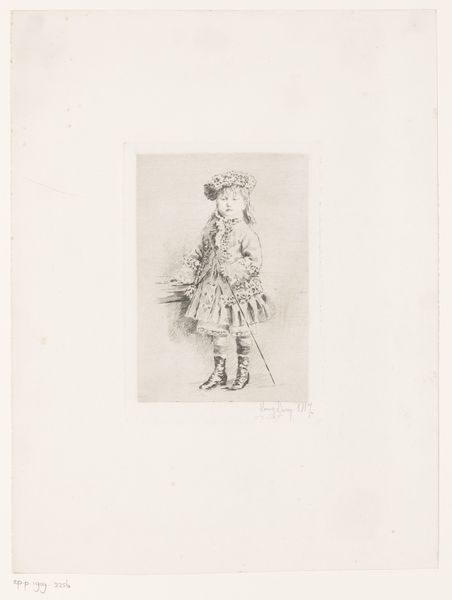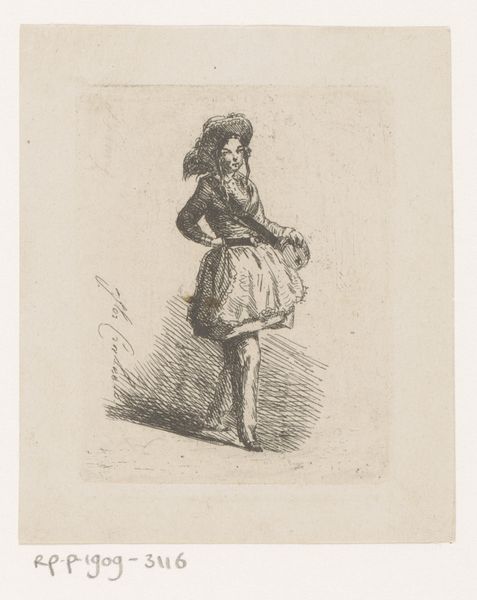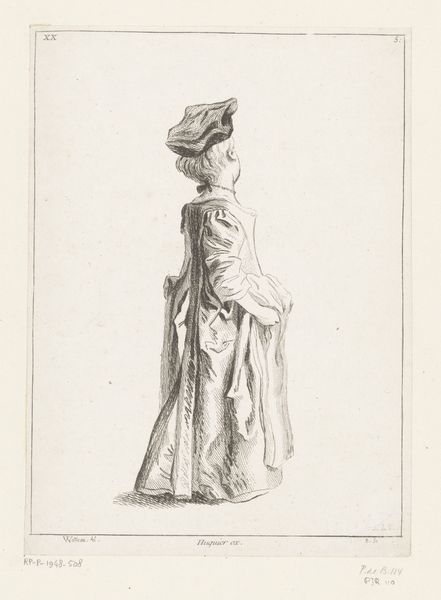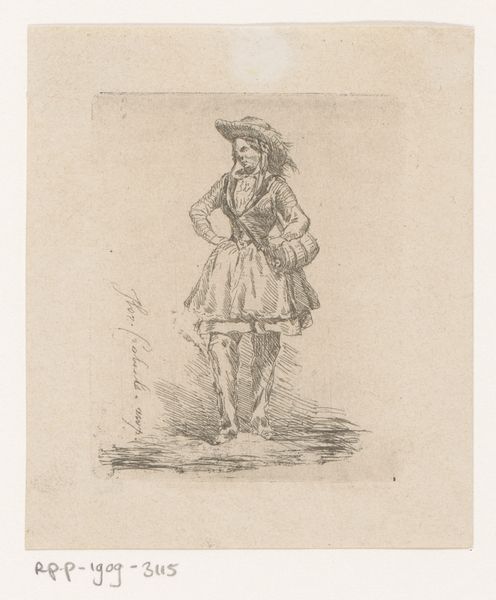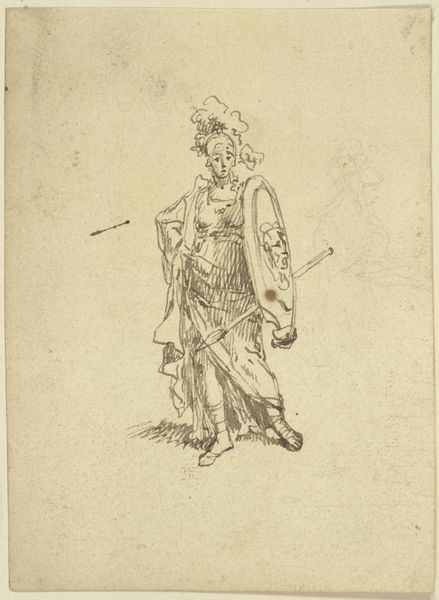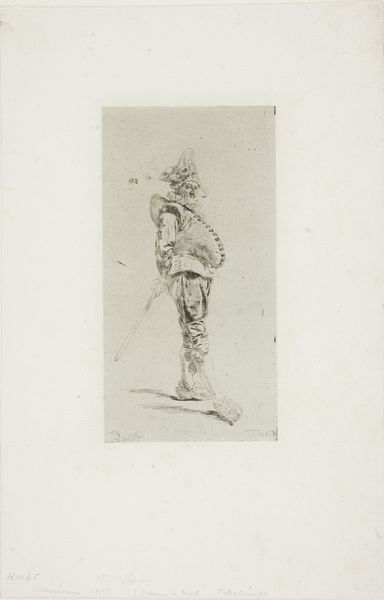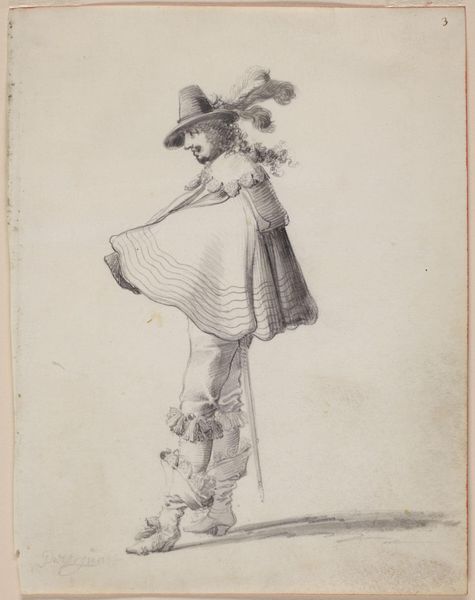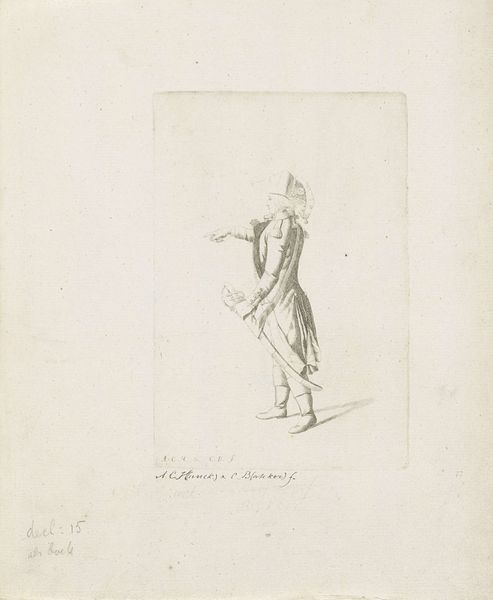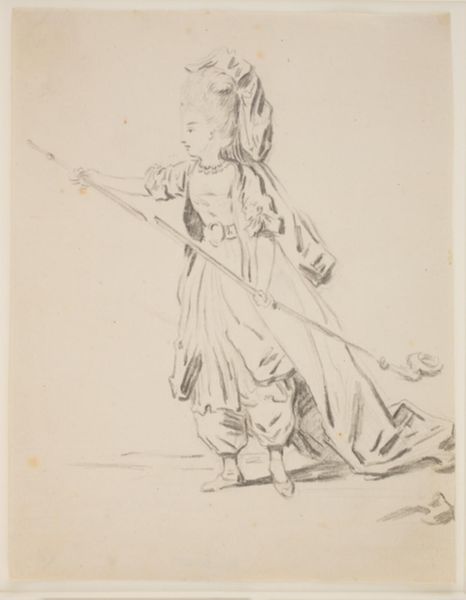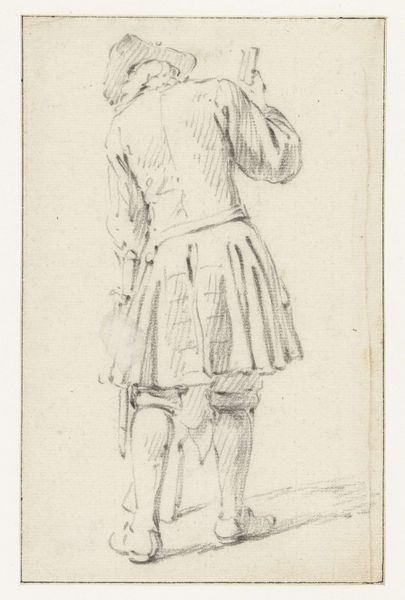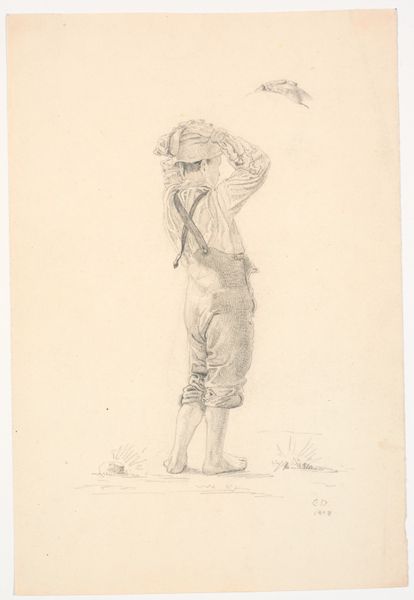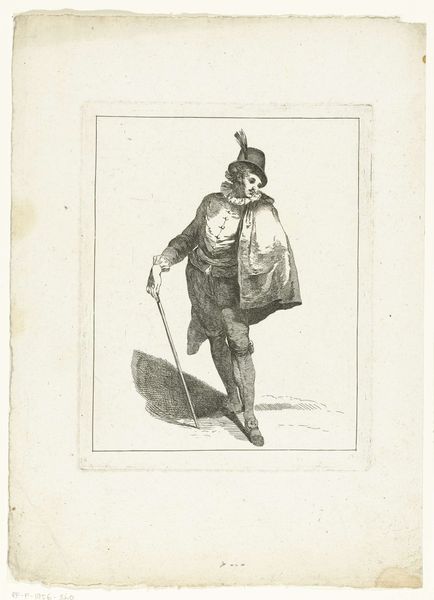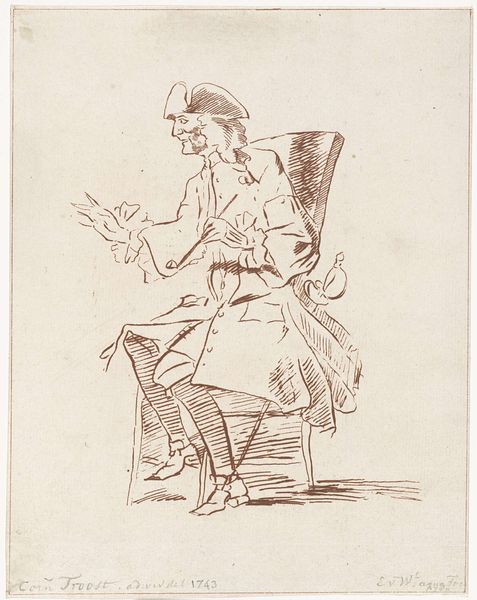
Dimensions: height 150 mm, width 96 mm
Copyright: Rijks Museum: Open Domain
Curator: This pen drawing, dating sometime between 1732 and 1779, offers a glimpse at "Portret van Anna Frederica von Promnitz" by Martin Tyroff. Editor: My first impression is that it's incredibly delicate and whimsical. The figure, presumably Anna Frederica, appears poised and perhaps a little melancholy with that downward gaze, all rendered in such fine lines. Curator: What strikes me is the choice of pen for this genre-like painting. Its materiality signifies a move away from traditional court portraiture and its elaborate display of wealth, suggesting a shift toward accessibility and private consumption. What type of paper and ink might have been used can tell us more. Editor: Yes, and I agree that the very fact this portrait is rendered with pen introduces a fascinating level of intimacy. I'm immediately thinking about the rise of portraiture and its entanglement with social status and shifting identity as it became more commonplace throughout that time. Curator: Right. The depicted garment hints at the production context, probably commissioned within court circles that were slowly adapting their ways of image production. How much did the patron get charged for that, which workers from which area contributed and from what background did the painter derive his aesthetic notions. That should be the actual portrait of Von Promnitz... Editor: I am especially captivated by his playful attitude, but, regardless, what truly strikes me are these soft shades and fluid, elegant lines, imbuing this individual with real charisma within the court circle in Germany. Do you agree? Curator: Partially, I think there are elements in the attire hinting at consumption culture trickling from the aristocratic circles into those of manufacture and craftsmanship. It becomes tricky to pinpoint if the subject is just emulating what’s fashionable or if her clothing represents what new, efficient looms now can churn out for cheaper than by manual means... It calls for a detailed forensic materials and textile analysis, really. Editor: True. Either way, considering the cultural politics surrounding depictions like these is quite interesting. Thank you for your view on the portrait and all the valuable thoughts! Curator: My pleasure! A crucial question we always ought to ask is "Who benefitted from its creation"?
Comments
No comments
Be the first to comment and join the conversation on the ultimate creative platform.
